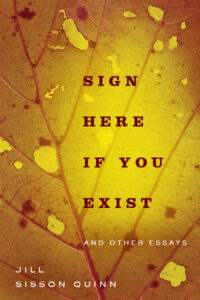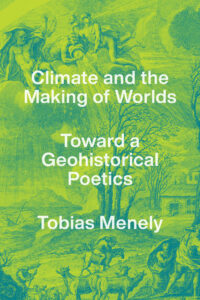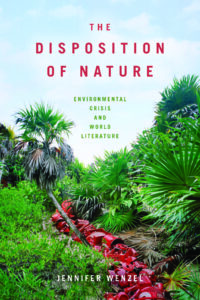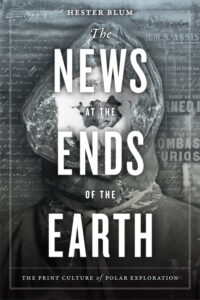Judges have announced the finalists for the 2022 ASLE Book Awards. The awards, in the categories of ecocriticism and environmental creative writing, were established in 2007 and have been given biennially to recognize excellence in the field. The 2021 awards were postponed to 2022 due to the pandemic. This year, because of the delay and the high number of excellent submissions, two winners will be chosen in each category.
Winners will be announced in late summer. These finalists are books authored or edited by ASLE and international affiliate members since the last awards cycle. Congratulations to our short-listed authors, read more about their books below.
ASLE Creative Writing Book Award Finalists
 Forage by Rose McLarney (poetry collection). Penguin Random House, 2019.
Forage by Rose McLarney (poetry collection). Penguin Random House, 2019.
In Forage, McLarney weaves together themes she loves: home, heritage, the South, animals, water, the environment. These intricately sequenced poems take up everything from animals’ symbolic roles in art and as indicators of ecological change to how water can represent a large, troubled system or the exceptions of smaller, purer tributaries. At the confluence of these poems is a social commentary that goes beyond lamenting environmental degradation and disaster to record–and augment–the beauty of the world in which we live.
 Gut Botany by Petra Kuppers (poetry collection). Wayne State University Press, 2020.
Gut Botany by Petra Kuppers (poetry collection). Wayne State University Press, 2020.
“Gut Botany charts my body / language living on indigenous land as a white settler and traveler,” Petra Kuppers writes in the notes of her new poetry collection. Using a perfect cocktail of surrealist and situationist techniques, Kuppers submits to the work and to the land, moving through ancient fish, wounded bodies, and the space around her. The book invites the reader to navigate their own body through the peaks and pitfalls of pain, survival, sensual joy, and healing. Readers looking for experimental poetry that takes up space in their brains and bodies will dive deep and fast into this queer ecosomatic investigation.
 A Kinship with Ash by Heather Swan (poetry collection). Terrapin Books, 2020.
A Kinship with Ash by Heather Swan (poetry collection). Terrapin Books, 2020.
“It’s difficult to accept that shadows, too, are products of the natural world. Often we hold what’s beautiful next to what we fear. As much as we want to appeal to our better angels, cruelty hovers and haunts our hearts. In Heather Swan’s A Kinship with Ash, wisdom is hard won. Elegant, image rich, and full of birdsong, these poems question and delight. But what is poetry if not the mind’s silhouette? In the pastoral tradition we confront our reflection, and here, Swan uses nature to look inward. As if negotiating the cliff’s edge, or wading into open water, her speakers are at the mercy of currents. We are left with faith. Reading these poems is an act of surveying light.” —Amaud Jamaul Johnson
 Leavetakings by Corinna Cook (essay collection). University of Alaska Press, 2020.
Leavetakings by Corinna Cook (essay collection). University of Alaska Press, 2020.
Leavetakings is an Alaska-based essay collection propelled by movements of departure and return. Corinna Cook asks: What can coming and going reveal about place? About how a place calls to us? About heeding that call? And might wandering serve not only to map new places but also to map the most familiar ones, like home? Departures and returns in these essays derive in large part from the narrator’s personal experiences of cross-continental travel by pickup truck and by airplane, human-powered expedition-style travel by kayak, regional travel by ferry, and her daily or local travel on foot. But the movement of coming and going at the heart of this collection exceeds the physical, for these essays are also intent on understanding spiritual and psychological pulses of proximity and distance in human connections to other people, their stories, and their homes.
 Listen, We All Bleed by Mandy-Suzanne Wong (essay collection). New Rivers Press, 2021.
Listen, We All Bleed by Mandy-Suzanne Wong (essay collection). New Rivers Press, 2021.
In the literary essay collection Listen, we all bleed, radical artists from around the world use recordings of nonhuman voices to plead for an end to violence against nonhuman animals. The essays, novelistic and acutely personal, listen to fishes, whales, coyotes, elephants, chickens, and more. Central to this work is the importance of listening—just listening—as a creative effort that’s also an activist act. An EcoLit Best Environmental Book of 2021, an SPD nonfiction bestseller, and a Pen/Galbraith and Foreword INDIES nominee; Listen, we all bleed includes reflections on the work of Kathryn Eddy, Cornelia Hesse-Honegger, Robbie Judkins, mOwson&M0wson, Dave Phillips, Colleen Plumb, Quiet Ensemble, Hiroki Sasajima, Andrew Stevenson, Jana Winderen, and Eisuke Yanagisawa.
 Luz at Midnight by Marisol Cortez (fiction / novel). Flowersong Press, 2020.
Luz at Midnight by Marisol Cortez (fiction / novel). Flowersong Press, 2020.
Deeply embedded in the landscapes of South Texas, Luz at Midnight tells the story of an ill-timed love that unfolds in the time of climate change. A genre-hopping narrative that layers story with reporting, poetry, scholarship, and teatro, Luz questions the nature of desire and power—along the way considering the humorous (and not-so-humorous) inner workings of the nonprofit industrial complex; Newtonian and Quantum theory; and the perambulations of birds and dogs. Luz also centrally explores what we call mental illness, including the possibility that love may be pathology, while madness may open some important window into the nature of reality.
 Magnifier by Brandon Krieg (poetry collection). The Center for Literary Publishing at Colorado State University, 2019.
Magnifier by Brandon Krieg (poetry collection). The Center for Literary Publishing at Colorado State University, 2019.
A magnifier praises what’s larger and a magnifier concentrates poisons. Brandon Krieg’s Magnifier is a book of spirits invoked by destroyers. It trains its gaze on the deep dependencies we are urged daily to hide from ourselves and interrogates the ways we insulate ourselves from the environmental and social degradations we perpetrate, often at many removes. Magnifier is a book of systems of our collective making that have taken on a life of their own, which we pretend to control. It is a book mourning Romanticism’s naiveté, even as it cannot help but engage in a search for meanings not commercial or ideological in the more-than-human world. And yet, the poems in Magnifier refuse to let slip from their focus the human everywhere, or to retreat into a mystifying “wilderness.” If a maple seed is to astonish, it must do so in the neighborhood of a reactor. Formally various, balanced on the edge of order and chaos, the poems in Magnifier cry out for “something more” from the “nothing but” even as they zero in on the damage we have done.
 Sign Here if You Exist, and Other Essays by Jill Sisson Quinn (essay collection). The Ohio State University Press, 2020.
Sign Here if You Exist, and Other Essays by Jill Sisson Quinn (essay collection). The Ohio State University Press, 2020.
Sign Here If You Exist explores states of being and states of mind, from the existence of God to sense of place to adoptive motherhood. In it, Jill Sisson Quinn examines how these states both disorient and anchor us as she treks through forests, along shorelines, and into lakes and rivers as well as through memories and into scientific literature. Each essay hinges on an unlikely pairing—parasitic wasps and the afterlife, or salamanders and parenthood—in which each element casts the other in an unexpectedly rich light. Quinn joins the tradition of writers such as Annie Dillard, Scott Russell Sanders, and Eula Biss to deliver essays that radiate from the junction of science and imagination, observation and introspection, and research and reflection.
 Sudden Spring: Stories of Adaptation in a Climate-Changed South by Rick Van Noy (nonfiction). University of Georgia Press, 2019.
Sudden Spring: Stories of Adaptation in a Climate-Changed South by Rick Van Noy (nonfiction). University of Georgia Press, 2019.
The results of climate change make the headlines almost daily. All across America and the globe, communities have to adapt to rising sea levels, intensified storms, and warmer temperatures. One way or another, climate change will be a proving ground. We will either sink, in cases where the land is subsiding, or swim, finding ways to address these challenges. While temperatures and seas are rising slowly, we have some immediate choices to make. If we act quickly and boldly, there is a small window of opportunity to prevent the worst. We can prepare for the changes by understanding what is happening and taking specific measures. There is “commitment” already in the climate change system. To minimize those effects will require another kind of commitment, the kind Rick Van Noy illustrates in these stories about a climate-distressed South. Like Rachel Carson’s groundbreaking work Silent Spring, Rick Van Noy’s Sudden Spring is a call to action to mitigate the current trends in our environmental degradation. By highlighting stories of people and places adapting to the impacts of a warmer climate, Van Noy shows us what communities in the South are doing to become more climate resilient and to survive a slow deluge of environmental challenges.
 Swale by Allison Hutchcraft (poetry collection). New Issues Press, 2020.
Swale by Allison Hutchcraft (poetry collection). New Issues Press, 2020.
Swale interrogates the violence of colonialism and its reverberations over time, as well as the extinction and the rapid decline of animal species. By turns tidal and cloistered, Swale speaks of science, reliquaries, and lapis lazuli, traversing forests, seascapes, and meadows. Here, the ocean becomes a field, a medieval tapestry transforms into a space that can be entered, and the body is fleshless, struck through with light. The speaker of these poems is ultimately unfixed—and with that comes both imaginative possibility and a personal unmooring. In poems that cast and recast the interior self in different guises—from the perpetually off-kilter Alice to the divergent voices of the shorn lamb and predatory foxhound—an unsettling anxiety grows starker, along with the wish for repair.
ASLE Ecocritical Book Award Finalists
 African Ecomedia: Network Forms, Planetary Politics by Cajetan Iheka. Duke University Press, 2021.
African Ecomedia: Network Forms, Planetary Politics by Cajetan Iheka. Duke University Press, 2021.
In African Ecomedia, Cajetan Iheka examines the ecological footprint of media in Africa alongside the representation of environmental issues in visual culture. Iheka shows how, through visual media such as film, photography, and sculpture, African artists deliver a unique perspective on the socioecological costs of media production, from mineral and oil extraction to the politics of animal conservation. Among other works, he examines Pieter Hugo’s photography of electronic waste recycling in Ghana and Idrissou Mora-Kpai’s documentary on the deleterious consequences of uranium mining in Niger. These works highlight not only the exploitation of African workers and the vast scope of environmental degradation but also the resourcefulness and creativity of African media makers. They point to the unsustainability of current practices while acknowledging our planet’s finite natural resources. In foregrounding Africa’s centrality to the production and disposal of media technology, Iheka shows the important place visual media has in raising awareness of and documenting ecological disaster even as it remains complicit in it.
 Climate and the Making of Worlds: Toward a Geohistorical Poetics by Tobias Menely. The University of Chicago Press, 2021.
Climate and the Making of Worlds: Toward a Geohistorical Poetics by Tobias Menely. The University of Chicago Press, 2021.
In this book, Tobias Menely develops a materialist ecocriticism, tracking the imprint of the planetary across a long literary history of poetic rewritings and critical readings which continually engage with the climate as a condition of human world making. Menely’s central archive is English poetry written between John Milton’s Paradise Lost (1667) and Charlotte Smith’s “Beachy Head” (1807)—a momentous century and a half during which Britain, emerging from a crisis intensified by the Little Ice Age, established the largest empire in world history and instigated the Industrial Revolution. Incorporating new sciences into ancient literary genres, these ambitious poems aspired to encompass what the eighteenth-century author James Thomson called the “system . . . entire.” Thus they offer a unique record of geohistory, Britain’s epochal transition from an agrarian society, buffeted by climate shocks, to a modern coal-powered nation. Climate and the Making of Worlds is a bracing and sophisticated contribution to ecocriticism, the energy humanities, and the prehistory of the Anthropocene.
 The Disposition of Nature: Environmental Crisis and World Literature by Jennifer Wenzel. Fordham University Press, 2019.
The Disposition of Nature: Environmental Crisis and World Literature by Jennifer Wenzel. Fordham University Press, 2019.
How do literature and other cultural forms shape how we imagine the planet, for better or worse? In this rich, original, and long awaited book, Jennifer Wenzel tackles the formal innovations, rhetorical appeals, and sociological imbrications of world literature that might help us confront unevenly distributed environmental crises, including global warming. The Disposition of Nature argues that assumptions about what nature is are at stake in conflicts over how it is inhabited or used. Both environmental discourse and world literature scholarship tend to confuse parts and wholes. Working with writing and film from Africa, South Asia, and beyond, Wenzel takes a contrapuntal approach to sites and subjects dispersed across space and time. Reading for the planet, Wenzel shows, means reading from near to there: across experiential divides, between specific sites, at more than one scale. Wenzel’s book fuses insights from political ecology, geography, anthropology, history, and law, while drawing on active debates between postcolonial theory and world literature, as well as scholarship on the Anthropocene and the material turn. In doing so, the book shows the importance of the literary to environmental thought and practice, elaborating how a supple understanding of cultural imagination and narrative logics can foster more robust accounts of global inequality and energize movements for justice and livable futures.
 Extraction Ecologies and the Literature of the Long Exhaustion by Elizabeth C. Miller. Princeton University Press, 2021.
Extraction Ecologies and the Literature of the Long Exhaustion by Elizabeth C. Miller. Princeton University Press, 2021.
Extraction Ecologies and the Literature of the Long Exhaustion examines the rise of large-scale industrial mining in the British imperial world and considers how literature from the 1830s to the 1930s reckoned with a new vision of extraction-based life. The threatening horizon of resource exhaustion worked its way into narrative form as part of the discursive and imaginative process by which Britain came to understand itself as an empire thoroughly dependent on extraction: an extraction-based industrial society irretrievably bound up with finite, nonrenewable stores of earthly resources, with no viable alternative capable of preserving existing social relations.
 Fictional Environments: Mimesis, Deforestation, and Development in Latin America by Victoria Saramago. Northwestern University Press, 2020.
Fictional Environments: Mimesis, Deforestation, and Development in Latin America by Victoria Saramago. Northwestern University Press, 2020.
Fictional Environments: Mimesis, Deforestation, and Development in Latin America investigates how fictional works have become sites for the production of knowledge, imagination, and intervention in Latin American environments. It investigates the dynamic relationship between fictional images and real places, as the lasting representations of forests, rural areas, and deserts in novels clash with collective perceptions of changes like deforestation and urbanization. From the backlands of Brazil to a developing Rio de Janeiro, and from the rainforests of Venezuela and Peru to the Mexican countryside, rapid deforestation took place in Latin America in the second half of the twentieth century. How do fictional works and other cultural objects dramatize, resist, and intervene in these ecological transformations? Through analyses of work by João Guimarães Rosa, Alejo Carpentier, Juan Rulfo, Clarice Lispector, and Mario Vargas Llosa, Victoria Saramago shows how novels have inspired conservationist initiatives and offered counterpoints to developmentalist policies, and how environmental concerns have informed the agendas of novelists as essayists, politicians, and public intellectuals. This book seeks to understand the role of literary representation, or mimesis, in shaping, sustaining, and negotiating environmental imaginaries during the deep, ongoing transformations that have taken place from the 1950s to the present.
 Infowhelm: Environmental Art and Literature in an Age of Data by Heather Houser. Columbia University Press, 2020.
Infowhelm: Environmental Art and Literature in an Age of Data by Heather Houser. Columbia University Press, 2020.
How do artists and writers engage with environmental knowledge in the face of overwhelming information about catastrophe? What kinds of knowledge do the arts produce when addressing climate change, extinction, and other environmental emergencies? What happens to scientific data when it becomes art? In Infowhelm, Heather Houser explores the ways contemporary art manages environmental knowledge in an age of climate crisis and information overload. Houser argues that the infowhelm—a state of abundant yet contested scientific information—is an unexpectedly resonant resource for environmental artists seeking to go beyond communicating stories about crises. Infowhelm analyzes how artists transform the techniques of the sciences into aesthetic material, repurposing data on everything from butterfly migration to oil spills and experimenting with data collection, classification, and remote sensing. Houser traces how artists ranging from novelist Barbara Kingsolver to digital memorialist Maya Lin rework knowledge traditions native to the sciences, entangling data with embodiment, quantification with speculation, precision with ambiguity, and observation with feeling. Their works provide new ways of understanding environmental change while also questioning traditional distinctions between types of knowledge. Bridging the environmental humanities, digital media studies, and science and technology studies, this timely book reveals the importance of artistic medium and form to understanding environmental issues and challenges our assumptions about how people arrive at and respond to environmental knowledge.
 Infrastructures of Apocalypse: American Literature and the Nuclear Complex by Jessica Hurley. University of Minnesota Press, 2020.
Infrastructures of Apocalypse: American Literature and the Nuclear Complex by Jessica Hurley. University of Minnesota Press, 2020.
Since 1945, America has spent more resources on nuclear technology than any other national project. Although it requires a massive infrastructure that touches society on myriad levels, nuclear technology has typically been discussed in a limited, top-down fashion that clusters around powerful men. In Infrastructures of Apocalypse, Jessica Hurley turns this conventional wisdom on its head, offering a new approach that focuses on neglected authors and Black, queer, Indigenous, and Asian American perspectives. Exchanging the usual white, male “nuclear canon” for authors that include James Baldwin, Leslie Marmon Silko, and Ruth Ozeki, Infrastructures of Apocalypse delivers a fresh literary history of post-1945 America that focuses on apocalypse from below. Here Hurley critiques the racialized urban spaces of civil defense and reads nuclear waste as a colonial weapon. Uniting these diverse lines of inquiry is Hurley’s belief that apocalyptic thinking is not the opposite of engagement but rather a productive way of imagining radically new forms of engagement.
 Media Hot and Cold by Nicole Starosielski. Duke University Press, 2022.
Media Hot and Cold by Nicole Starosielski. Duke University Press, 2022.
In Media Hot and Cold Nicole Starosielski examines the cultural dimensions of temperature to theorize the ways heat and cold can be used as a means of communication, subjugation, and control. Diving into the history of thermal media, from infrared cameras to thermostats to torture sweatboxes, Starosielski explores the many meanings and messages of temperature. During the twentieth century, heat and cold were broadcast through mass thermal media. Today, digital thermal media such as bodily air conditioners offer personalized forms of thermal communication and comfort. Although these new media promise to help mitigate the uneven effects of climate change, Starosielski shows how they can operate as a form of biopower by determining who has the ability to control their own thermal environment. In this way, thermal media can enact thermal violence in ways that reinforce racialized, colonial, gendered, and sexualized hierarchies. By outlining how the control of temperature reveals power relations, Starosielski offers a framework to better understand the dramatic transformations of hot and cold media in the twenty-first century.
 The News at the Ends of the Earth: The Print Culture of Polar Exploration by Hester Blum. Duke University Press, 2019.
The News at the Ends of the Earth: The Print Culture of Polar Exploration by Hester Blum. Duke University Press, 2019.
From Sir John Franklin’s doomed 1845 search for the Northwest Passage to early twentieth-century sprints to the South Pole, polar expeditions produced an extravagant archive of documents that are as varied as they are engaging. As the polar ice sheets melt, fragments of this archive are newly emergent. In The News at the Ends of the Earth Hester Blum examines the rich, offbeat collection of printed ephemera created by polar explorers. Ranging from ship newspapers and messages left in bottles to menus and playbills, polar writing reveals the seamen wrestling with questions of time, space, community, and the environment. Whether chronicling weather patterns or satirically reporting on penguin mischief, this writing provided expedition members with a set of practices to help them survive the perpetual darkness and harshness of polar winters. The extreme climates these explorers experienced is continuous with climate change today. Polar exploration writing, Blum contends, offers strategies for confronting and reckoning with the extreme environment of the present.
 Wild Blue Media: Thinking through Seawater by Melody Jue. Duke University Press, 2021.
Wild Blue Media: Thinking through Seawater by Melody Jue. Duke University Press, 2021.
In Wild Blue Media, Melody Jue destabilizes terrestrial-based ways of knowing and reorients our perception of the world by considering the ocean itself as a media environment—a place where the weight and opacity of seawater transforms how information is created, stored, transmitted, and perceived. By recentering media theory on and under the sea, Jue calls attention to the differences between perceptual environments and how we think within and through them as embodied observers. In doing so, she provides media studies with alternatives to familiar theoretical frameworks, thereby challenging scholars to navigate unfamiliar oceanic conditions of orientation, materiality, and saturation. Jue not only examines media about the ocean—science fiction narratives, documentary films, ocean data visualizations, animal communication methods, and underwater art—but reexamines media through the ocean, submerging media theory underwater to estrange it from terrestrial habits of perception while reframing our understanding of mediation, objectivity, and metaphor.
